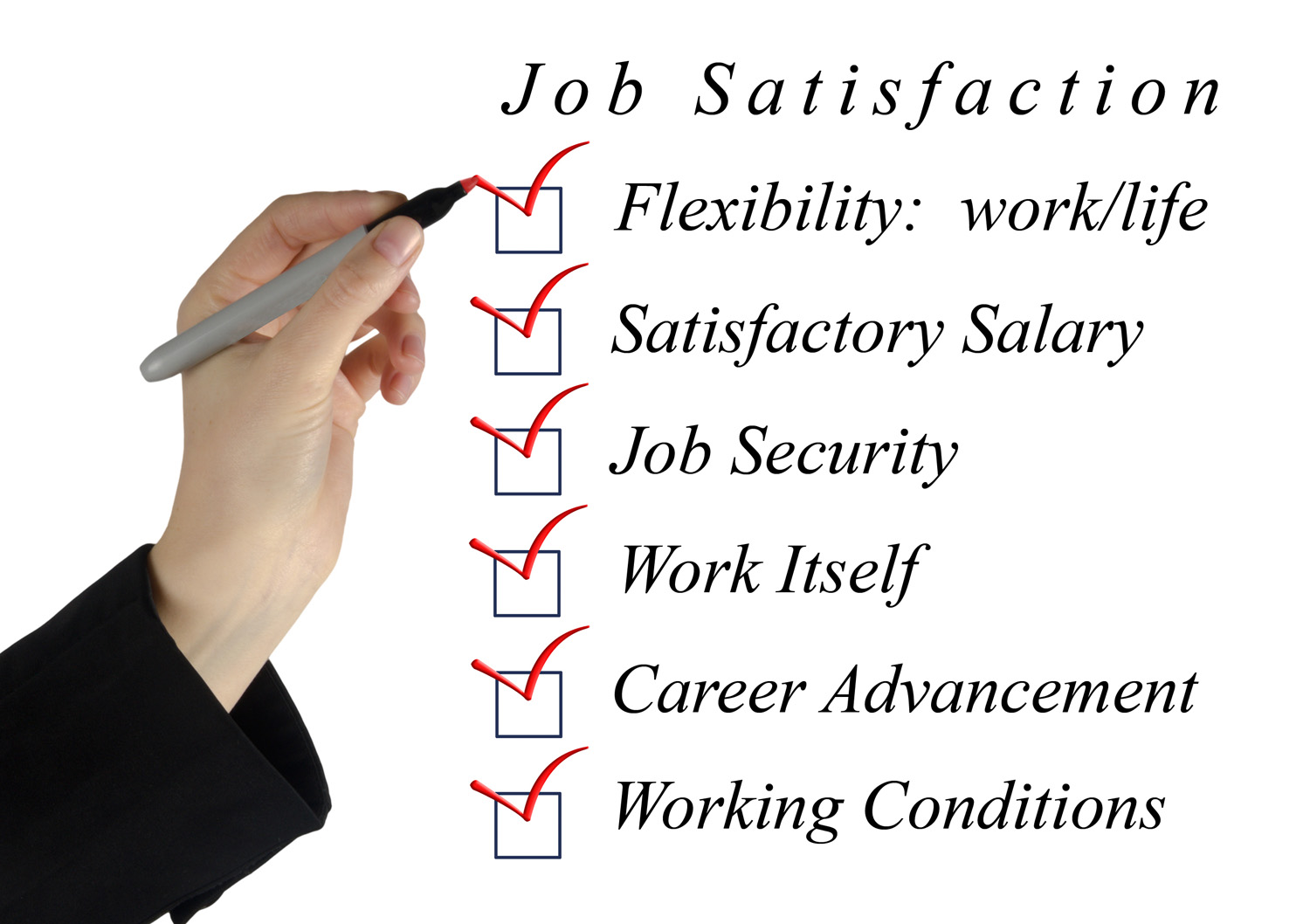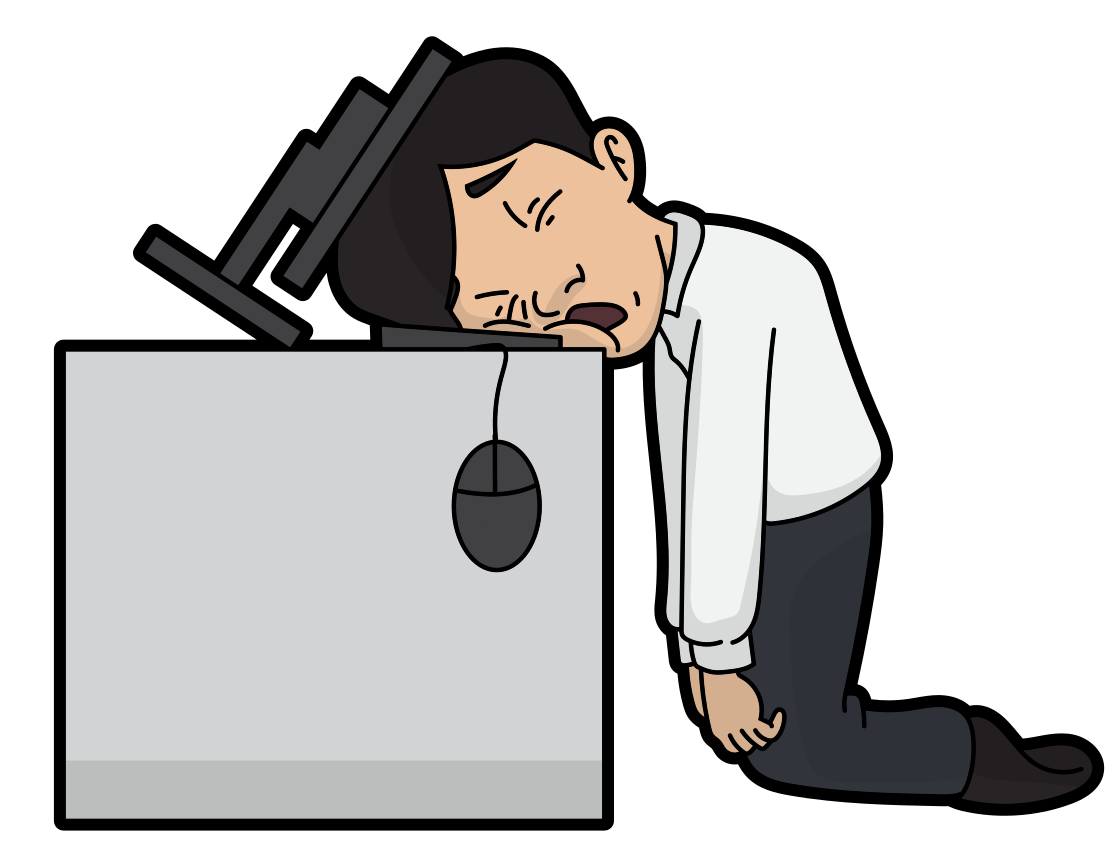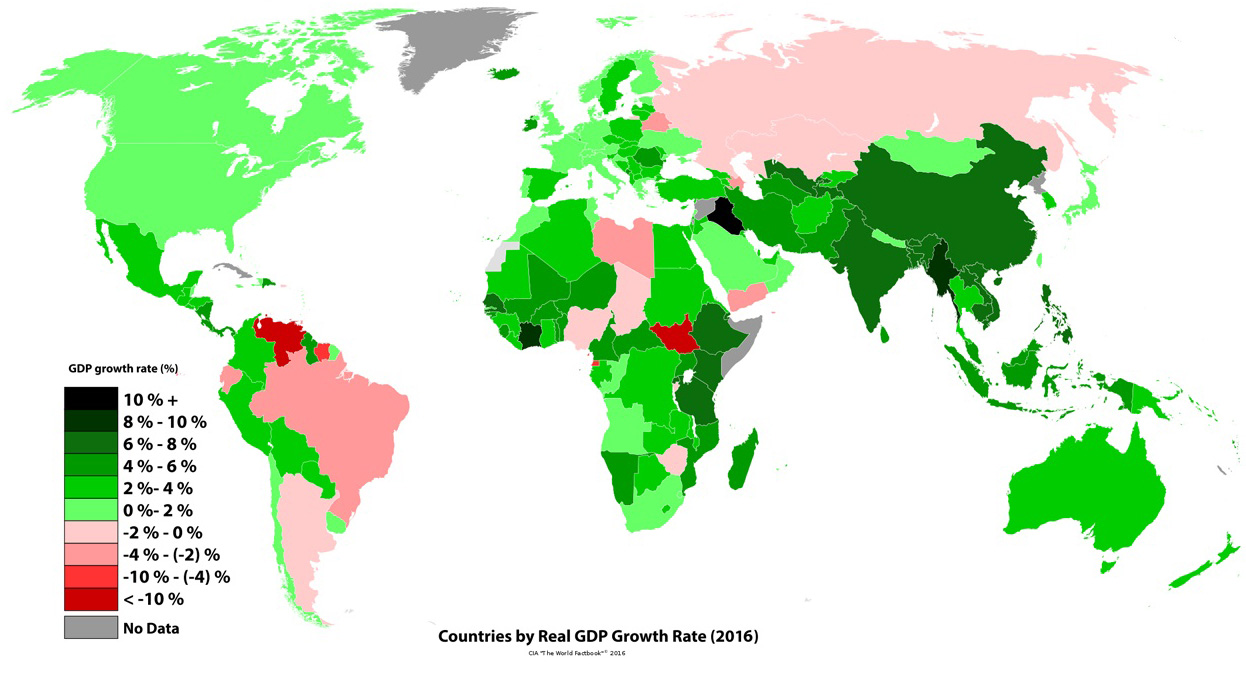 Have you ever wondered how your job affects your happiness? We all know that not all jobs are created equal. Some are awesome, while others … not so much. Well, it turns out that employment status and the type of work you do can have a big impact on how you feel – especially in developing countries where labour markets are usually tighter and switching between jobs can be more difficult.
Have you ever wondered how your job affects your happiness? We all know that not all jobs are created equal. Some are awesome, while others … not so much. Well, it turns out that employment status and the type of work you do can have a big impact on how you feel – especially in developing countries where labour markets are usually tighter and switching between jobs can be more difficult.
A recent study by Carmichael, Darko and Vasilakos (2021) uses survey data from Ethiopia, Peru, India and Vietnam to answer this very question. The study found that the quality of work is a big deal when it comes to how young people feel. Not all jobs are ‘good jobs’ that automatically make you feel great. Although your wellbeing is likely to be higher when you’re in employment than when you’re not, there are certain job attributes that can push that ‘employment premium’ up or down. This is especially important to understand in countries like many in sub-Saharan Africa, where there aren’t many formal jobs, and people often end up overqualified for what they do.
What job attributes lead to higher wellbeing?
 What then are the job attributes that are correlated with higher levels of wellbeing? The first is money: Okay, we know money can’t buy happiness, but it can certainly make life easier. We were therefore hardly surprised to find a positive and statistically significant association between hourly earnings and wellbeing.
What then are the job attributes that are correlated with higher levels of wellbeing? The first is money: Okay, we know money can’t buy happiness, but it can certainly make life easier. We were therefore hardly surprised to find a positive and statistically significant association between hourly earnings and wellbeing.
We were also not surprised to find that a ‘poor working environment’ has a strong and highly significant negative effect on wellbeing.
Finally, feeling proud of your work is also found to be a strongly significant determinant of your wellbeing. After all, people tend to excel in things they like doing, which is probably part of the ‘transmission mechanism’ between ‘work pride’ and ‘subjective wellbeing’.
 Which one of these attributes did you think had the greatest effect on wellbeing? Let me guess, many of you will say ‘earnings’. But then you would be wrong. Earnings were indeed positively associated with wellbeing and statistically significant at just about the 10% level, whereas work pride was very strongly statistically significant at the 1% level and had an effect on wellbeing that was four times greater than hourly earnings.
Which one of these attributes did you think had the greatest effect on wellbeing? Let me guess, many of you will say ‘earnings’. But then you would be wrong. Earnings were indeed positively associated with wellbeing and statistically significant at just about the 10% level, whereas work pride was very strongly statistically significant at the 1% level and had an effect on wellbeing that was four times greater than hourly earnings.
Putting yourself in a poor working environment on the other hand would reduce your wellbeing by almost twice as much as the earnings coefficient.
Policy implications
What does all this mean for policy-makers? If we want to make life better for young people in low-income countries, we need to tackle the problems from multiple angles.
 First, young people need to be helped to get the skills they need for the job market. This can be done through things like training programmes and apprenticeships. However, not all of these programmes are created equal. Some have great results, and others not so much.
First, young people need to be helped to get the skills they need for the job market. This can be done through things like training programmes and apprenticeships. However, not all of these programmes are created equal. Some have great results, and others not so much.
But that’s not the whole story. In many countries, there’s a massive informal job market. It’s a place where people work but often don’t have the rights or protections that formal employees do. So, even if young people get trained, they might not find the ‘good’ jobs they’re hoping for.
Changes also need to be made on a much bigger scale. This often includes decentralising public investment to include rural areas, improving infrastructure, and encouraging private investment. Strengthening labour market rules and social protection can help too, by making sure that work is safe and fair.
In a nutshell, where you work and what kind of work you do can make a big difference to how you feel.
Conclusions
If policy-makers want to help young people in low-income countries, they need both to give them the skills they require and to create better job opportunities. But policy-makers also need to make bigger changes to the way things work, like boosting production and making sure jobs are safe and fair.
In the end, it’s about making life better for young people around the world. Let’s keep working on it!
Articles
- Well-being and employment of young people in Ethiopia, India, Peru and Vietnam: Is work enough?
Development Policy Review, Fiona Carmichael, Christian K. Darko and Nicholas Vasilakos (18/5/21)
- The search for ‘meaning’ at work
BBC Worklife, Kate Morgan (7/9/22)
- Job Satisfaction Is Rising: What’s Behind The Surprising Tend
Forbes, Tracy Brower (4/6/23)
- Young workers are embracing AI, job satisfaction rising: 2023 Young Generation in Tech report
Silicon Canals (4/10/23)
- ‘These jobs can be respectable too’: Why youths in China are abandoning white-collar jobs for ‘light labor’
CNBC, Goh Chiew Tong (6/6/23)
- Does Work Make You Happy? Evidence from the World Happiness Report
Harvard Business Review, Jan-Emmanuel De Neve and George Ward (20/3/17)
- Worker well-being is in demand as organizational culture shifts
American Psychological Association, Monitor on Psychology, Heather Stringer (1/1/23)
- Understanding children’s work and youth employment outcomes in Indonesia
Understanding Children’s Work (UCW) Programme, Villa Aldobrandini and V. Panisperna (June 2012)
- Where are We with Young People’s Wellbeing? Evidence from Nigerian Demographic and Health Surveys 2003–2013
Social Indicators Research, pp.803–33, Boniface Ayanbekongshie Ushie and Ekerette Emmanuel Udoh (November 2016)
- Employment Status and Well-Being Among Young Individuals. Why Do We Observe Cross-Country Differences?
Social Indicators Research, Dominik Buttler (29/6/22)
- Employment Mismatches Drive Expectational Earnings Errors among Mozambican Graduates
The World Bank Economic Review, Sam Jones, Ricardo Santos and Gimelgo Xirinda (27/7/23)
- Youth Employment and Skills Development in The Gambia
World Bank Working Paper 217, Nathalie Lahire, Richard Johanson and Ryoko Tomita Wilcox (2011)
Questions
- How does the quality of work impact the happiness and wellbeing of young people in low- and middle-income countries (LMICs), and why is this significant in the context of job opportunities in sub-Saharan Africa?
- What are some potential solutions and strategies discussed in the article for improving the wellbeing of young people in LMICs, particularly in the context of employment and job opportunities?
- Have you ever experienced a job that significantly (positively or negatively) impacted your wellbeing or happiness? Reflect on your experience and how it influenced your overall life satisfaction?
- How is AI likely to affect the wellbeing of young professional workers?
- How is the pandemic likely to have affected job satisfaction?
 You’ve had a busy day at work. You check your watch; it’s almost 5pm. You should be packing soon – except, your boss is still in their office. You shouldn’t really be seen leaving before your boss, should you? You don’t want to be branded as ‘that guy’ – the one who is ‘not committed’, ‘not willing to go the extra mile’, ‘not flexible enough’, first out of the door’ – you don’t want to have that label pinned on your performance appraisal. After all, your boss is still hard at work, and so are your other colleagues.
You’ve had a busy day at work. You check your watch; it’s almost 5pm. You should be packing soon – except, your boss is still in their office. You shouldn’t really be seen leaving before your boss, should you? You don’t want to be branded as ‘that guy’ – the one who is ‘not committed’, ‘not willing to go the extra mile’, ‘not flexible enough’, first out of the door’ – you don’t want to have that label pinned on your performance appraisal. After all, your boss is still hard at work, and so are your other colleagues.
So you wait, pretending to work, although you do not really do much – perhaps you’re checking Facebook, reading the news or similar. And so does your boss, not wanting to be seen leaving before anyone else. But what example is this going to set for you and your other colleagues. You all wait for someone to make the first move – a prisoner’s dilemma situation. The only difference is that it’s you who is the prisoner in this situation.
Presenteeism
What we have described is an example of presenteeism. But how would we define it? If you search the term on Google Scholar or Scopus, you will come across a number of articles in the fields of health and labour economics that define presenteeism as a phenomenon in which employees who feel physically unwell choose to go to work, or stay on at work, rather than asking for time off to get better (see, for instance, Hansen and Andersen, 2008 and several others). This is also known as sickness presenteeism.
According to Cooper and Lu (2016), however, the use of the term can be extended to describe a wider situation in which a worker is physically present at their workplace but not functioning (by reason of tiredness, physical illness, mental ill-health, peer pressure or whatever else). As explained in Biron and Saksvik (2009):
Cooper’s conceptualisation of presenteeism implied that presenteeism was a behaviour determined by specific determinants (i.e. long working hours and a context of uncertainty). This tendency to stay at work longer than required to display a visible commitment is what Simpson (1998) calls ‘competitive presenteeism’ where people compete on who will stay in the office the longest.
The effect of presenteeism
 Unsurprisingly, the effect of presenteeism on the wellbeing of workers and the economic performance of firms has been looked at extensively from different angles and disciplines – including health economists, organisational behaviour and labour economists – for a recent and comprehensive review of the literature on this topic see Lohaus and Habermann (2019).
Unsurprisingly, the effect of presenteeism on the wellbeing of workers and the economic performance of firms has been looked at extensively from different angles and disciplines – including health economists, organisational behaviour and labour economists – for a recent and comprehensive review of the literature on this topic see Lohaus and Habermann (2019).
Most of these studies agree that the effects of presenteeism are negative; in particular, they identify significant negative effects on the physical health of workers (Skagen and Collins, 2016); emotional exhaustion and mental health issues (Demerouti et al, 2009); persistent productivity loss (Warren et al, 2011); lower work engagement and negative feelings (Asfaw et al, 2017) – among several others. There seems, therefore, to be plenty of convincing evidence that presenteeism is bad for everyone – business owners, managers and staff.
 So next time that you find yourself stuck at work working silly hours, feeling totally unproductive and just staying to be seen, email this blog to your boss and other colleagues – and ask them if they wish to join you for a drink or a walk.
So next time that you find yourself stuck at work working silly hours, feeling totally unproductive and just staying to be seen, email this blog to your boss and other colleagues – and ask them if they wish to join you for a drink or a walk.
You’re welcome!
(By the way, there’s a saying that in the UK the last one to leave the office is seen as the hardest working, whereas in Germany the last one to leave the office is seen as the least efficient!)
Articles
- The problem with presenteeism
Personnel Today, Nerys Williams (5/12/13)
- Presenteeism and Why You Should Care
Linkedin, Jeffrey Smagacz (25/9/23)
- When so much at work has changed, why can’t we shake presenteeism?
BBC News, Josie Cox (24/7/23)
- What is presenteeism? Counting the cost of presenteeism in the workplace
Enhesa, Lauren Payne (4/10/23)
- Presenteeism at Work
Health Assured (20/1/20 – since updated)
- Turning the tide on presenteeism: how employers can combat the growing problem
The HR Director Magazine, David Bourne (22/5/19)
 Do I really have to be here? The curse of workplace presenteeism
Do I really have to be here? The curse of workplace presenteeismRTE, Kevin Murphy (29/5/19)
- Working when sick is rising and harms you and your employer. This is why
World Economic Forum Agenda, Douglas Broom (2/5/20)
- Majority of absence and presenteeism could be addressed by ‘targeted’ employer support
Occupational health & wellbeing: Personnel Today, Ashleigh Webber (15/4/19)
- How To Break The Chains Of Presenteeism
Forbes, Jack Kelly (25/7/23)
- Eradicating Presenteeism, Absenteeism, and Leavism in the Workplace
SpiceWorks, Jonathan Munnery (7/6/23)
References
- Going ill to work–what personal circumstances, attitudes and work-related factors are associated with sickness presenteeism?
Social science & medicine, Vol 67(6), pp.956–64, Claus D Hansen and Johan Hviid Andersen (June 2008)
- Presenteeism as a global phenomenon
Cross Cultural & Strategic Management, Vol 23(2) pp.216–31, Cary L Cooper and Luo Lu (April 2016)
- Sickness presenteeism and attendance pressure factors: Implications for practice
International handbook of work and health psychology, Chapter 5, Caroline Biron and Per Øystein Saksvik (11/12/09)
- Presenteeism, Power and Organizational Change: Long Hours as a Career Barrier and the Impact on the Working Lives of Women Managers
British Journal of Management, Vol 9(1) pp.37–50, Ruth Simpson (September 1998)
- Presenteeism: A review and research directions
Human Resource Management Review, Vol 29(1), pp.43–58, Daniela Lohaus and Wolfgang Habermann (March 2019)
- The consequences of sickness presenteeism on health and wellbeing over time: A systematic review
Social Science & Medicine, Vol 161, pp.169–77, Kristian Skagen and Alison M.Collins (July 2016)
- Present but sick: a three‐wave study on job demands, presenteeism and burnout
Career Development International, Vol 14(1), pp.50–68, Evangelia Demerouti, Pascale M Le Blanc, Arnold B Bakker, Wilmar B Schaufeli and Joop Hox (2009)
- Cost burden of the presenteeism health outcome: Diverse workforce of nurses and pharmacists
Journal of Occupational and Environmental Medicine, Vol 53(1), pp.90–9, Carol L Warren, Shelley White-Means, Mona Wicks, Cyril F Chang, Dick Gourley and Muriel Rice (January 2011)
- Potential Economic Benefits of Paid Sick Leave in Reducing Absenteeism Related to the Spread of Influenza-Like Illness
Journal of occupational and environmental medicine Vol 59(9), pp.822–9, Abay Asfaw, Roger Rosa and Regina Pana-Cryan (September 2017)
Questions
- ‘Presenteeism leads to lower productivity and firm performance and should be discouraged by business owners and managers’. Discuss.
- Jack Ma, the Chinese billionaire and owner of Ali Baba, has defended his ‘996 work model’ (working 9am to 9pm for 6 days a week) as a ‘huge blessing’. Find and review some articles on this topic, and use them to write a response. Your response should be substantiated using relevant economic theory and empirical research.
- Have you or anyone you know found yourself guilty of presenteeism? Share your experience with the rest of the class, focusing on effects on productivity and your attitude towards your employer and work colleagues.
 Policymakers around the world have used Gross Domestic Product as the main gauge of economic performance – and have often adopted policies that aim to maximise its rate of growth. Generation after generation of economists have committed significant time and effort to thinking about the factors that influence GDP growth, on the premise that an expanding and healthy economy is one that sees its GDP increasing every year at a sufficient rate.
Policymakers around the world have used Gross Domestic Product as the main gauge of economic performance – and have often adopted policies that aim to maximise its rate of growth. Generation after generation of economists have committed significant time and effort to thinking about the factors that influence GDP growth, on the premise that an expanding and healthy economy is one that sees its GDP increasing every year at a sufficient rate.
But is economic output a good enough indicator of national economic wellbeing? Costanza et al (2014) (see link below) argue that, despite its merits, GDP can be a ‘misleading measure of national success’:
GDP measures mainly market transactions. It ignores social costs, environmental impacts and income inequality. If a business used GDP-style accounting, it would aim to maximize gross revenue — even at the expense of profitability, efficiency, sustainability or flexibility. That is hardly smart or sustainable (think Enron). Yet since the end of the Second World War, promoting GDP growth has remained the primary national policy goal in almost every country. Meanwhile, researchers have become much better at measuring what actually does make life worthwhile. The environmental and social effects of GDP growth is a misleading measure of national success. Countries should act now to embrace new metrics.
 The limitations of GDP growth as a measure of economic wellbeing and national strength are becoming increasingly clear in today’s world. Some of the world’s wealthiest countries are plagued by discontent, with a growth in populism and social discontent – attitudes which are often fuelled by high rates of poverty and economic hardship. In a recent report titled ‘The Living Standards Audit 2018’ published by the Resolution Foundation, a UK economic thinktank (see link below), the authors found that child poverty rose in 2016–17 as a result of declining incomes of the poorest third of UK households:
The limitations of GDP growth as a measure of economic wellbeing and national strength are becoming increasingly clear in today’s world. Some of the world’s wealthiest countries are plagued by discontent, with a growth in populism and social discontent – attitudes which are often fuelled by high rates of poverty and economic hardship. In a recent report titled ‘The Living Standards Audit 2018’ published by the Resolution Foundation, a UK economic thinktank (see link below), the authors found that child poverty rose in 2016–17 as a result of declining incomes of the poorest third of UK households:
While the economic profile of UK households has changed, living standards – with the exception of pensioner households – have mostly stagnated since the mid-2000s. Typical household incomes are not much higher than they were in 2003–04. This stagnation in living standards for many has brought with it a rise in poverty rates for low to middle income families. Over a third of low to middle income families with children are in poverty, up from a quarter in the mid-2000s, and nearly two-fifths say that they can’t afford a holiday away for their children once a year. On the other hand, the share of non-working families in poverty has fallen, though not by enough to prevent an overall rise in poverty since 2010.
Their projections also show that this rise in poverty was likely to have continued in 2017–18:
Although the increase in broad measures of inequality were relatively muted last year, our nowcast suggests that there was a pronounced rise in poverty (measured after housing costs[…]. The increase in overall poverty (from 22.1 to 23.2 per cent) was the largest since 1988. But this was dwarfed by the increase in child poverty, which rose from 30.3 per cent to 33.4 per cent. […]The fortunes of middle-income households diverged from those towards the bottom of the distribution and so a greater share of households, and children, found themselves below the poverty threshold.
A simple literature search on Scope (or even Google Scholar) shows that there has been a significant increase in the number of journal articles and reports in the last 10 years on this topic. We do talk more about the limitations of GDP, but we are still using it as the main measure of national economic performance.
Is it then time to stop focusing our attention on GDP growth exclusively and start considering broader metrics of social development? And what would such metrics look like? Both interesting questions that we will try to address in coming blogs.
Articles
Report
Data
Hearing
Questions
- What are the main strengths and weakness of using GDP as measure of economic performance?
- Is high GDP growth alone enough to foster economic and social wellbeing? Explain your answer using examples.
- Write a list of alternative measures that could be used alongside GDP-based metrics to measure economic and social progress. Explain your answer.
 GDP is often used as a measure of wellbeing, even though it is really only a measure of the market value of a nation’s output or an indicator of economic activity. But although higher consumption can improve living standards, it is only one contributor to wellbeing, whether at individual or social level.
GDP is often used as a measure of wellbeing, even though it is really only a measure of the market value of a nation’s output or an indicator of economic activity. But although higher consumption can improve living standards, it is only one contributor to wellbeing, whether at individual or social level.
There are essentially four types of problems from using GDP as a measure of how society is doing.
The first is that it does not include (as negative figures) many external costs, such as pollution, stress and family breakdown related to work.
The second is that it includes things that are produced to counteract the adverse effects of increased production, such as security, antidepressants, therapy and clean-up activities.
The third is that it ignores things that are produced and do contribute to wellbeing and yet are not traded in the market. Examples include volunteer work, the ‘output’ of clubs and societies, work within the home, production from allotments and various activities taking place in the ‘underground economy’ to avoid taxation.
 The fourth is the sustainability of economic growth. If we deplete natural resources, the growth of today may be at the cost of the wellbeing of future generations.
The fourth is the sustainability of economic growth. If we deplete natural resources, the growth of today may be at the cost of the wellbeing of future generations.
Then there is the question of the distribution of the benefits of production. Although GDP figures can be adjusted for distribution, crude GDP growth figures are not. If a few wealthy get a lot richer and the majority do not, or even get poorer, a growth in GDP will not signify a growth in wellbeing of the majority.
Then there is the question of the diminishing marginal utility of income. If an extra pound to a rich person gives less additional wellbeing than an extra pound to a poor person, then any given growth rate accompanied by an increase in inequality will contribute less to wellbeing than the same growth rate accompanied by a decrease in inequality.
The first article below criticises the use of crude indicators, such as the growth in GDP or stock market prices to signify wellbeing. It also looks at some alternative indicators that can capture some of the contributions to wellbeing missed by GDP figures.
Articles
Want to know how society’s doing? Forget GDP – try these alternatives The Guardian, Mark Rice-Oxley (27/1/17)
The Increasingly Inadequate Measurement Of Productivity The Market Mogul, Chris Woods (20/1/17)
Why GDP fails as a measure of well-being CBS News, Mark Thoma (27/1/16)
Limitations of GDP as Welfare Indicator The Sceptical Economist, zielonygrzyb (31/7/12)
Questions
- Should GDP be abandoned as an indicator?
- How could GDP be refined to capture more of the factors affecting wellbeing?
- Go through each of the indicators discussed in the first article above and consider their suitability as an indicator of wellbeing.
- “Everywhere you look, there are better benchmarks than these tired old financial yardsticks.” Identify three such indicators not considered in the first article and discuss their suitability as measures of economic performance.
- How might the benefit you gain from free apps be captured?
- Consider the suitability of these alternatives to GDP.
According to most conventional measures, income inequality in the developed world has been rising. This trend has been argued to be particularly prevalent in the UK and USA, but the article below from The Economist argues that conventional measures may be mis-representing the differences between the better off and the less well off. Instead of looking at income inequality, it looks at consumption inequality.
The new (improved) Gilded age The Economist (19/12/07)
Questions
| 1. |
Define the terms (a) income inequality and (b) consumption inequality. |
| 2. |
Assess the extent to which income represents a good measure of economic wellbeing. |
| 3. |
Discuss two policies that could be used to reduce (a) income inequality and (b) consumption inequality. |
 Have you ever wondered how your job affects your happiness? We all know that not all jobs are created equal. Some are awesome, while others … not so much. Well, it turns out that employment status and the type of work you do can have a big impact on how you feel – especially in developing countries where labour markets are usually tighter and switching between jobs can be more difficult.
Have you ever wondered how your job affects your happiness? We all know that not all jobs are created equal. Some are awesome, while others … not so much. Well, it turns out that employment status and the type of work you do can have a big impact on how you feel – especially in developing countries where labour markets are usually tighter and switching between jobs can be more difficult. What then are the job attributes that are correlated with higher levels of wellbeing? The first is money: Okay, we know money can’t buy happiness, but it can certainly make life easier. We were therefore hardly surprised to find a positive and statistically significant association between hourly earnings and wellbeing.
What then are the job attributes that are correlated with higher levels of wellbeing? The first is money: Okay, we know money can’t buy happiness, but it can certainly make life easier. We were therefore hardly surprised to find a positive and statistically significant association between hourly earnings and wellbeing. Which one of these attributes did you think had the greatest effect on wellbeing? Let me guess, many of you will say ‘earnings’. But then you would be wrong. Earnings were indeed positively associated with wellbeing and statistically significant at just about the 10% level, whereas work pride was very strongly statistically significant at the 1% level and had an effect on wellbeing that was four times greater than hourly earnings.
Which one of these attributes did you think had the greatest effect on wellbeing? Let me guess, many of you will say ‘earnings’. But then you would be wrong. Earnings were indeed positively associated with wellbeing and statistically significant at just about the 10% level, whereas work pride was very strongly statistically significant at the 1% level and had an effect on wellbeing that was four times greater than hourly earnings. First, young people need to be helped to get the skills they need for the job market. This can be done through things like training programmes and apprenticeships. However, not all of these programmes are created equal. Some have great results, and others not so much.
First, young people need to be helped to get the skills they need for the job market. This can be done through things like training programmes and apprenticeships. However, not all of these programmes are created equal. Some have great results, and others not so much. You’ve had a busy day at work. You check your watch; it’s almost 5pm. You should be packing soon – except, your boss is still in their office. You shouldn’t really be seen leaving before your boss, should you? You don’t want to be branded as ‘that guy’ – the one who is ‘not committed’, ‘not willing to go the extra mile’, ‘not flexible enough’, first out of the door’ – you don’t want to have that label pinned on your performance appraisal. After all, your boss is still hard at work, and so are your other colleagues.
You’ve had a busy day at work. You check your watch; it’s almost 5pm. You should be packing soon – except, your boss is still in their office. You shouldn’t really be seen leaving before your boss, should you? You don’t want to be branded as ‘that guy’ – the one who is ‘not committed’, ‘not willing to go the extra mile’, ‘not flexible enough’, first out of the door’ – you don’t want to have that label pinned on your performance appraisal. After all, your boss is still hard at work, and so are your other colleagues.  Unsurprisingly, the effect of presenteeism on the wellbeing of workers and the economic performance of firms has been looked at extensively from different angles and disciplines – including health economists, organisational behaviour and labour economists – for a recent and comprehensive review of the literature on this topic see Lohaus and Habermann (2019).
Unsurprisingly, the effect of presenteeism on the wellbeing of workers and the economic performance of firms has been looked at extensively from different angles and disciplines – including health economists, organisational behaviour and labour economists – for a recent and comprehensive review of the literature on this topic see Lohaus and Habermann (2019). So next time that you find yourself stuck at work working silly hours, feeling totally unproductive and just staying to be seen, email this blog to your boss and other colleagues – and ask them if they wish to join you for a drink or a walk.
So next time that you find yourself stuck at work working silly hours, feeling totally unproductive and just staying to be seen, email this blog to your boss and other colleagues – and ask them if they wish to join you for a drink or a walk. 
 Policymakers around the world have used Gross Domestic Product as the main gauge of economic performance – and have often adopted policies that aim to maximise its rate of growth. Generation after generation of economists have committed significant time and effort to thinking about the factors that influence GDP growth, on the premise that an expanding and healthy economy is one that sees its GDP increasing every year at a sufficient rate.
Policymakers around the world have used Gross Domestic Product as the main gauge of economic performance – and have often adopted policies that aim to maximise its rate of growth. Generation after generation of economists have committed significant time and effort to thinking about the factors that influence GDP growth, on the premise that an expanding and healthy economy is one that sees its GDP increasing every year at a sufficient rate.  The limitations of GDP growth as a measure of economic wellbeing and national strength are becoming increasingly clear in today’s world. Some of the world’s wealthiest countries are plagued by discontent, with a growth in populism and social discontent – attitudes which are often fuelled by high rates of poverty and economic hardship. In a recent report titled ‘The Living Standards Audit 2018’ published by the
The limitations of GDP growth as a measure of economic wellbeing and national strength are becoming increasingly clear in today’s world. Some of the world’s wealthiest countries are plagued by discontent, with a growth in populism and social discontent – attitudes which are often fuelled by high rates of poverty and economic hardship. In a recent report titled ‘The Living Standards Audit 2018’ published by the 
